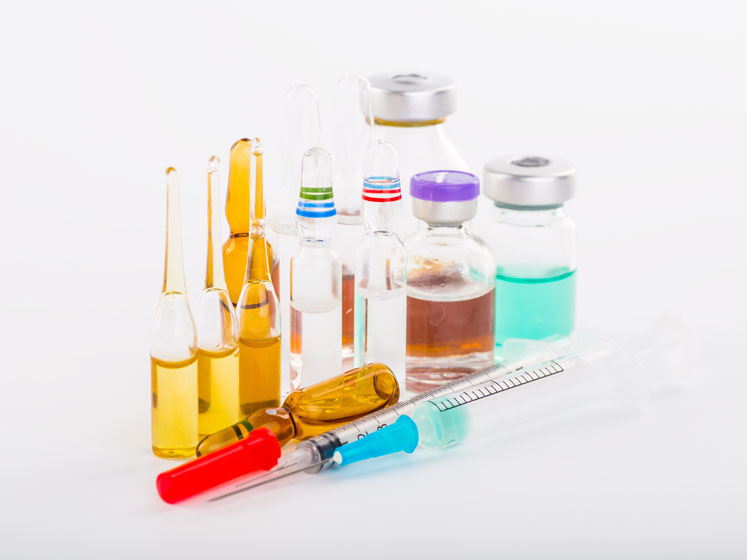On the one hand, for example, AI, robotics, personalised medicine and digital therapies offer new ways to tackle a range of issues; on the other, they are relatively new tools wherein grey areas arise daily.
The volume of FDA applications to test new cellular and gene therapies (CGTs) for sickle cell disease and amyotrophic lateral sclerosis (ALS), to name a couple of the most recently approved treatments, has highlighted the need for new policies and updated operations to fully realise the promise of these advanced treatments.
In the UK, in November 2023, the government announced its support for the Rare Therapies Launch Pad, a programme with the objective of developing a pathway for children with rare conditions to access individualised therapies.1
This, aligned with the UK Government's Medical Technology Strategy plan (February 2023), signals a commitment to embracing healthcare innovation.2 Digital innovation was also a focal point in the 2019 NHS Long Term Plan, outlining priorities for the next decade.3

At the same time, the European regulatory outlook is undergoing a critical period of change with the transition to new medical device (MDR) and in vitro device regulation (IVDR).
The new MDR and IVDR set out specifically to tackle safety issues and require far greater levels of post-market surveillance and more extensive documentation.
Within this evolving environment, medical device manufacturers need to carefully select which markets to first launch their devices on.
Although some regulators may require similar documentation and preparation, effectively laying the groundwork for entry into multiple markets, there are various other elements that need to be taken into consideration.
The UK
Market size: Although smaller in scale when compared with the US and EU, the UK medical devices market is expected to reach a value of $17.52 billion in 2023, making this an appealing market with many opportunities especially for novel and technological devices.4
Challenges and opportunities: In addition to the government stating that it wants to create the ideal humus for medical technology innovation, the absence of a language barrier for US manufacturers and many other global producers who have adopted English as the universal language of business are a benefit.
As well, and the appeal of the National Health Service (NHS) — which accounts for approximately 86% of the country’s healthcare provision — complements a still-operating and mature regulatory system for the time being.5
The US
Market size: The US FDA’s reputation for strictness is most certainly tempered by the sheer size of the US medical device market, which is valued at $176.7 billion in 2020 and represents a 43.5% share of global sales.6,7
Challenges and opportunities: Although the US is a tough market to enter first with a very innovative, high-risk product, if there is an existing or similar product — an equivalent device with the same intended use — submission is vastly simplified.
The device developer needs to ensure that their quality management system (QMS) meets FDA requirements (21 CFR Part 820), undertake establishment registration and for non-US (foreign) manufacturers and arrange a US Agent (21 CFR Part 807).
Fees are, however, usually considerably lower than in the EU for product assessment.
If the manufacturer owns the predicate device, they will have access to all the information about it; but, if this is another manufacturer’s device, the information to which they have access is restricted to that in the public domain.
This makes it complex to build the technical documentation required to support an argument of substantial equivalence when writing the 510(k), which needs to be done in line with publicly available FDA guidance.
By contrast, if the manufacturer can prove that the device is substantially equivalent, a clinical investigation isn’t always necessary when using the 510(k) submission route; this helps to reduce time-to-market and overall costs.
The EU
Market size: The European Union accounts for 24.5% of medical device sales making this an appealing market to launch your medical device.7 The top five biggest markets in this area are Germany, France, the United Kingdom, Italy and Spain.
Challenges and opportunities: The regulatory journey to place a device in the European Union is undoubtedly more complex. Manufacturers must engage with a Notified Body (NB) to certify the device, evaluate their QMS, review technical documentation and assess clinical evidence to be compliant with new EU MDR standards.
As manufacturers seek to get their products recertified, the risk of bottlenecks forming is very real. To avoid potential risks associated with a shortage of innovative new products, the EU Commission is actively working to enhance the market’s appeal by simplifying the transition to the EU MDR/IVDR and extending deadlines on products certified under previous regulations.
Choosing initial market entry is therefore no easy decision. Medical device manufacturers would do well to complete extensive research into their chosen geographies and thoroughly assess the pros and cons of the different regulatory pathways offered.
Enlisting the support of experienced professionals can help to guard against risks and pitfalls that may prove costly later in the device’s lifecycle.
References
- www.genomicsengland.co.uk/news/pilot-launched-to-support-children-with-rare-conditions-to-access-personalised-therapies.
- www.gov.uk/government/publications/medical-technology-strategy/medical-technology-strategy.
- www.trade.gov/country-commercial-guides/united-kingdom-medical-technology.
- www.statista.com/outlook/hmo/medical-technology/medical-devices/united-kingdom.
- www.trade.gov/country-commercial-guides/united-kingdom-medical-technology.
- www.grandviewresearch.com/industry-analysis/us-medical-device-manufacturers-market.
- www.medtecheurope.org/datahub/market/.

